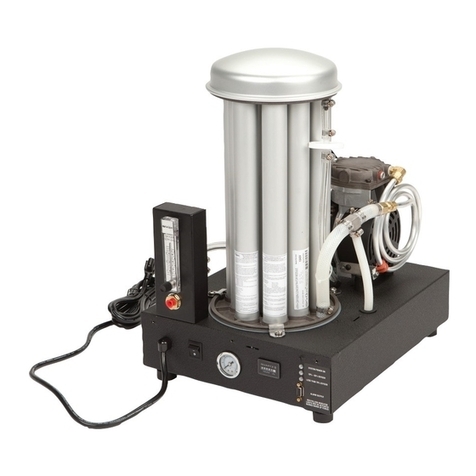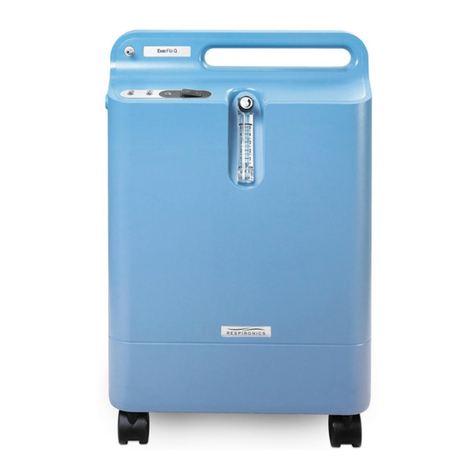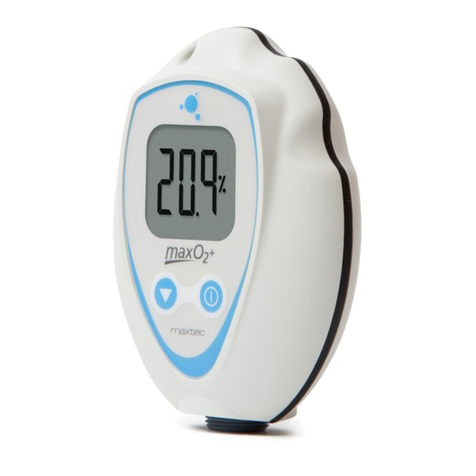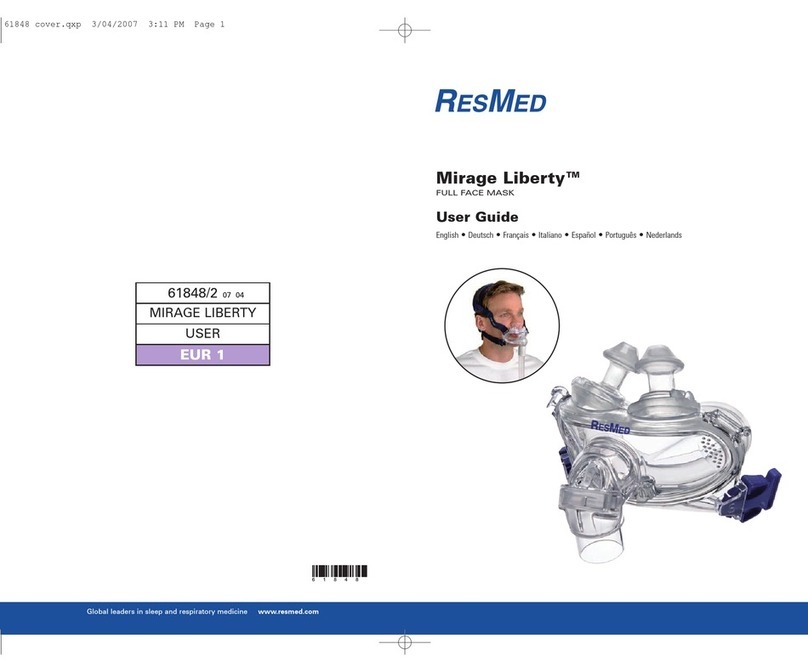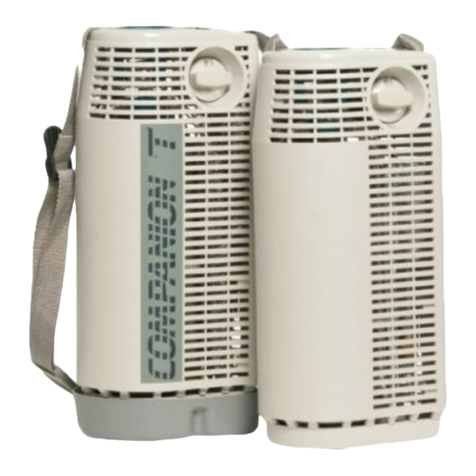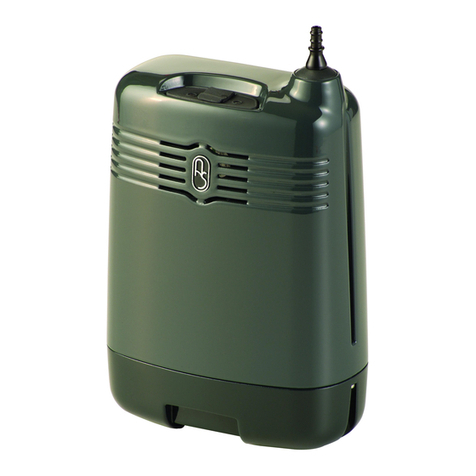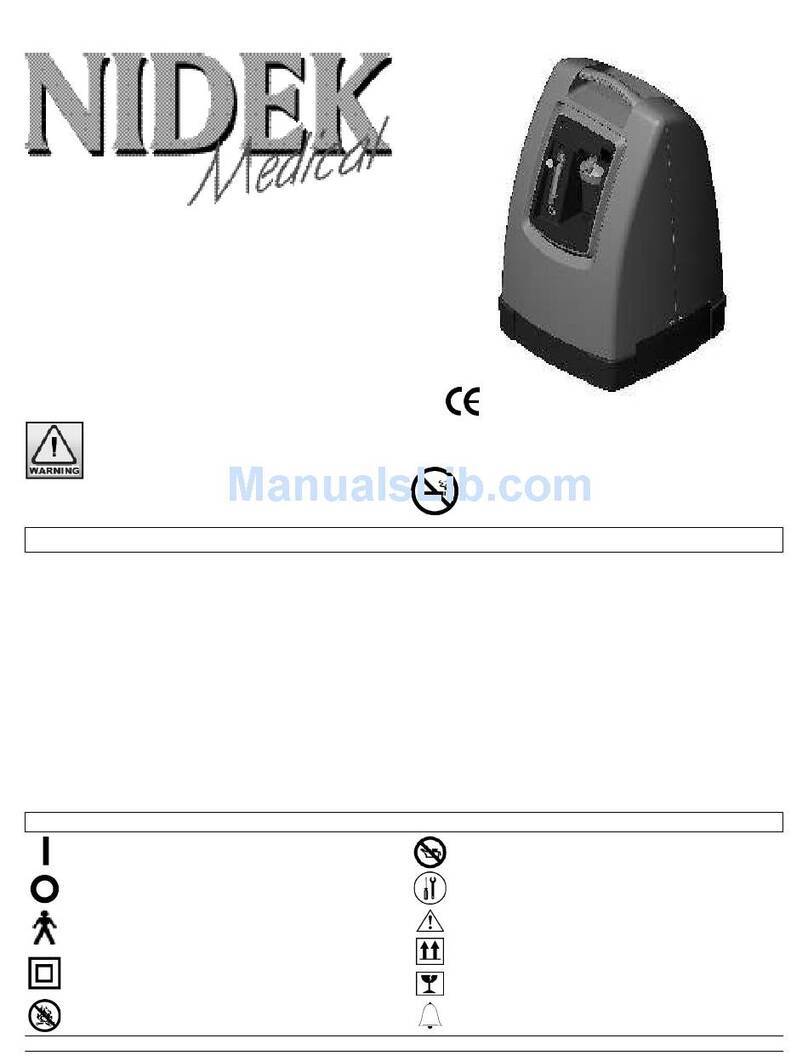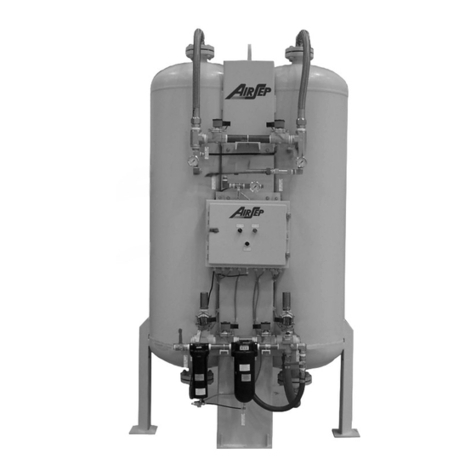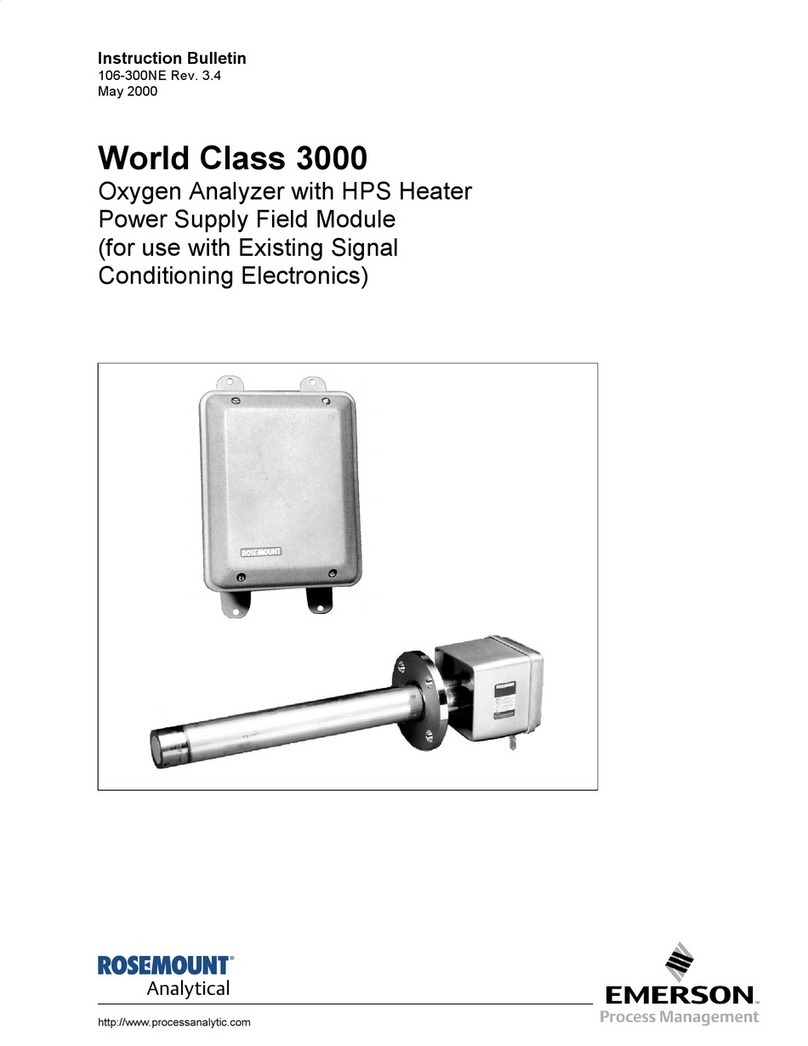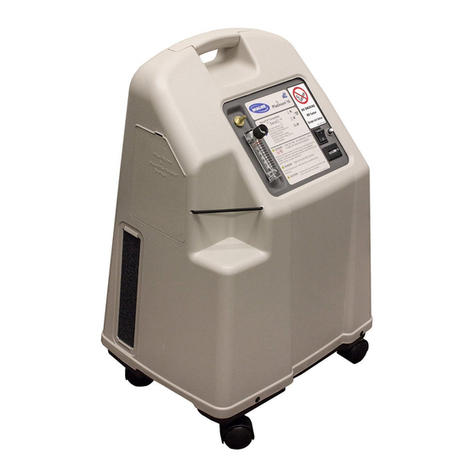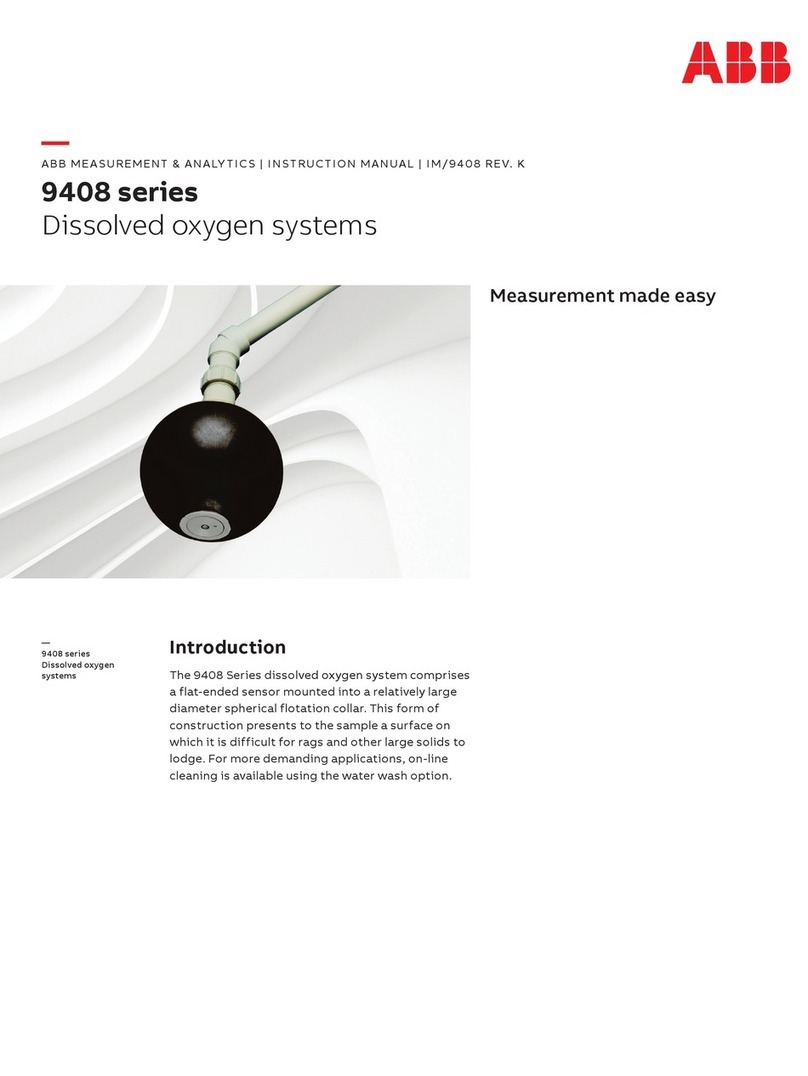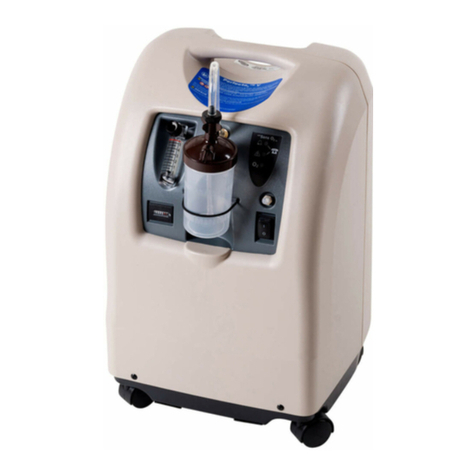
Troubleshooting
TROUBLESHOOTING
The following troubleshooting chart will help you analyze and correct minor oxygen concentrator malfunctions. If the suggested procedures do not
help, switch to your reserve oxygen system and call your Sunrise Medical/DeVilbiss homecare provider. Do not attempt any other maintenance.
WARNING
To avoid electric shock hazard, do not remove the cabinet. The cabinet should only be removed by a qualified Sunrise
Medical/DeVilbiss homecare technician.
A-515A
8English
Symptom
A. Unit does not operate. Power light is off when
the power switch is “On.” Audible alarm is puls-
ing and Service Required light is flashing.
B. Unit operates, the Power light is on when the
power switch is “On.” Red Service Required
light is illuminated. Audible alarm may be
sounding.
C. Unit operates, the power light is on when power
switch is "on," audible low-frequency vibration
sound is detected.
D. If any other problems occur with your oxygen
concentrator.
Possible Cause
1. Power cord not properly inserted into wall outlet.
2. No power at wall outlet.
3. Oxygen concentrator circuit breaker activated
(selected units).
1. Air filter is blocked.
2. Exhaust is blocked.
3. Blocked or defective cannula, catheter, face
mask, or oxygen tubing.
4. Blocked or defective humidifier bottle.
5. Flow meter set too low.
Remedy
1. Check power cord connection at the wall outlet.
On 230 volt units, also check the back of the
unit.
2. Check your home circuit breaker and reset if
necessary. Use a different wall outlet if the situ-
ation occurs again.
3. Press the concentrator circuit breaker reset but-
ton (if equipped) located below the power
switch. Use a different wall outlet if the situa-
tion occurs again.
If the above remedies do not work, contact your
Sunrise Medical/DeVilbiss provider.
1. Check the air filter. If the filter is dirty, wash it
following the cleaning instructions on page 7.
2. Check the exhaust area; make sure there is noth-
ing restricting the unit exhaust.
3. Detach cannula, catheter, or face mask. If prop-
er flow is restored, clean or replace if necessary.
Disconnect the oxygen tubing at the oxygen
outlet. If proper flow is restored, check oxygen
tubing for obstructions or kinks. Replace if nec-
essary.
4. Detach the humidifier from the oxygen outlet. If
proper flow is obtained, clean or replace
humidifier.
5. Set flow meter to prescribed flow rate.
If the above remedies do not work, contact your
Sunrise Medical/DeVilbiss provider.
1. Turn your unit “Off.” Switch to your reserve
oxygen system, and contact your Sunrise
Medical/DeVilbiss provider immediately.
1. Turn your unit “Off.” Switch to your reserve
oxygen system, and contact your Sunrise
Medical/DeVilbiss provider immediately.
Visual Indicator Lights
A. Both the green Normal Oxygen and the yellow
Low Oxygen lights are either on or off.
B. Yellow Low Oxygen light is on or the yellow Low
Oxygen light is on and the intermittent audible
signal is sounding.
C. Red Service Required light is on and an intermit-
tent audible signal is sounding.
Possible Cause
1. OSD malfunction.
1. Flow meter is not properly set.
2. Air filter is blocked.
3. Exhaust is blocked.
1. Flow meter is not properly set.
2. Air filter is blocked.
3. Exhaust is blocked.
Remedy
1. Contact your Sunrise Medical/DeVilbiss provider.
1. Ensure the flow meter is properly set to the pre-
scribed number.
2. Check the air filter. If the filter is dirty, wash it
following the cleaning instructions on page 7.
3. Check the exhaust area; make sure there is noth-
ing restricting the unit exhaust.
1. Ensure the flow meter is properly set to the pre-
scribed number.
2. Check the air filter. If the filter is dirty, wash it
following the cleaning instructions on page 7.
3. Check the exhaust area; make sure there is noth-
ing restricting the unit exhaust.
If the above remedies do not work, contact your
Sunrise Medical/DeVilbiss provider.
MINOR TROUBLESHOOTING CHART
MINOR TROUBLESHOOTING CHART - ONLY OSD CONCENTRATORS
